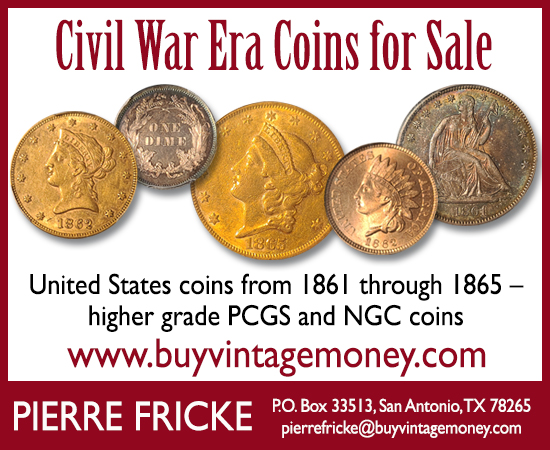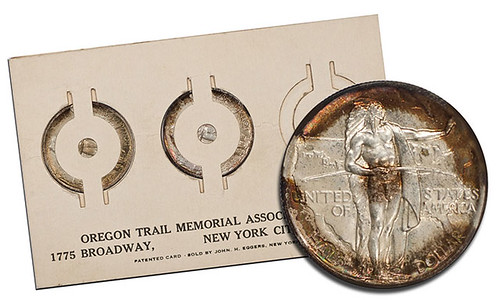
PREV ARTICLE
NEXT ARTICLE
FULL ISSUE
PREV FULL ISSUE
COMMEMORATIVE COIN TAB TONINGA nice CoinWeek article by Dan Duncan discusses the distinctive toning seen on examples of classic U.S. commemorative coins due to their storage in the original cardboard shipping holders. Here's a short excerpt - see the complete article online. Great photos! -Editor Coins are toned when the silver oxidizes after coming into contact with foreign material and gases. The toning patterns and colors are determined by how the coins were stored, either as originally distributed or in their collected environments. Morgan dollars are known to have a textile tone from the canvas bag, and many examples display end roll toning from the folded ends of the paper wraps in which they were stored. Roosevelt and Mercury dimes can be found with a banded toning from the bank cards that encouraged account holders to save in the fifties and sixties. Of course, all silver coins can be found with target toning featuring colorful bands extending from the peripheries from years of sitting in various collector albums. All of these examples and more are highly coveted by collectors across the spectrum of enthusiasts.
But, the classic commemoratives have a unique toning pattern imparted from the original cardboard holders in which the coins were originally distributed. Many of those sold between 1935 and 1937 were mailed in three-, five-, or six-coin cardboard holders that featured a paper strap designed to hold the coins in place. The exposed areas around the tab oxidized leaving an identifiable circle across the surfaces of the coins. Usually, the opposite side of this
1926–1939 Oregon Trail Memorial
To read the complete article, see:

Wayne Homren, Editor The Numismatic Bibliomania Society is a non-profit organization promoting numismatic literature. See our web site at coinbooks.org. To submit items for publication in The E-Sylum, write to the Editor at this address: whomren@gmail.com To subscribe go to: https://my.binhost.com/lists/listinfo/esylum All Rights Reserved. NBS Home Page Contact the NBS webmaster 
|
